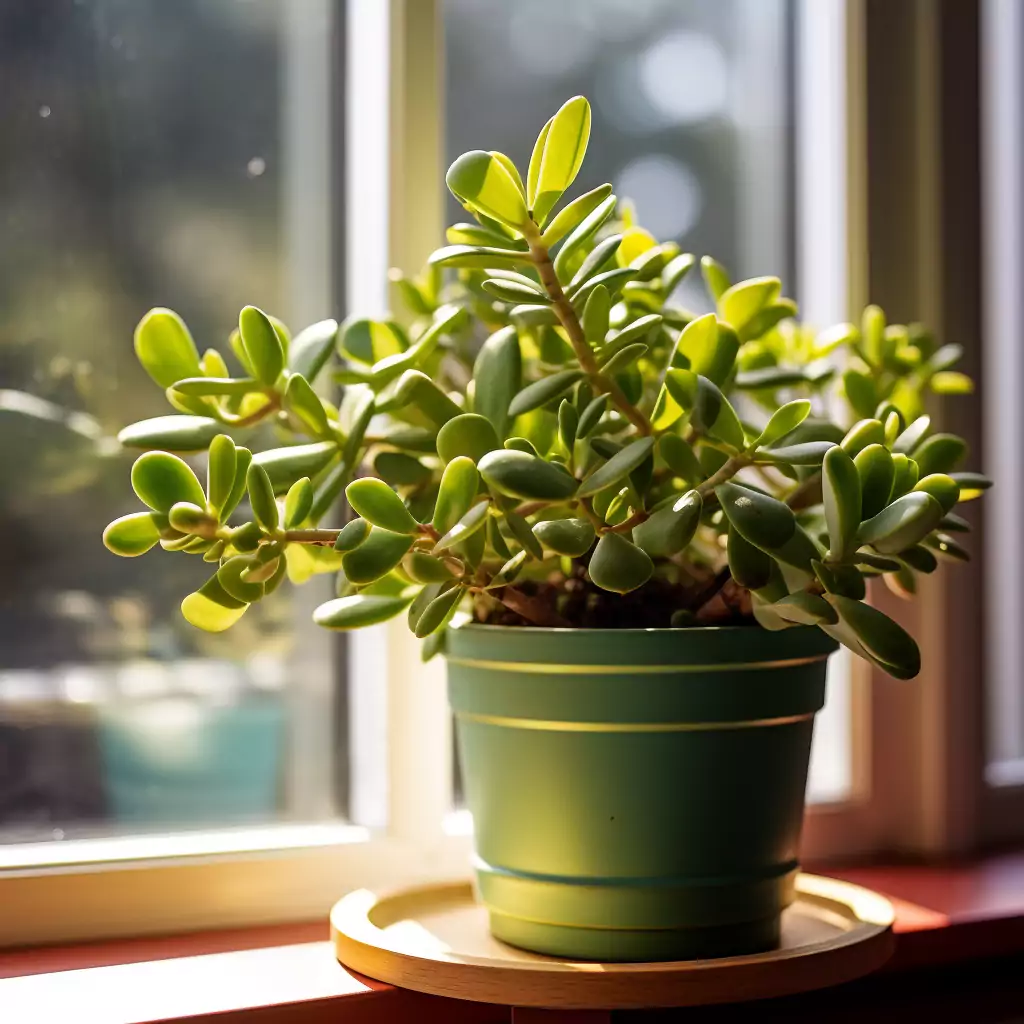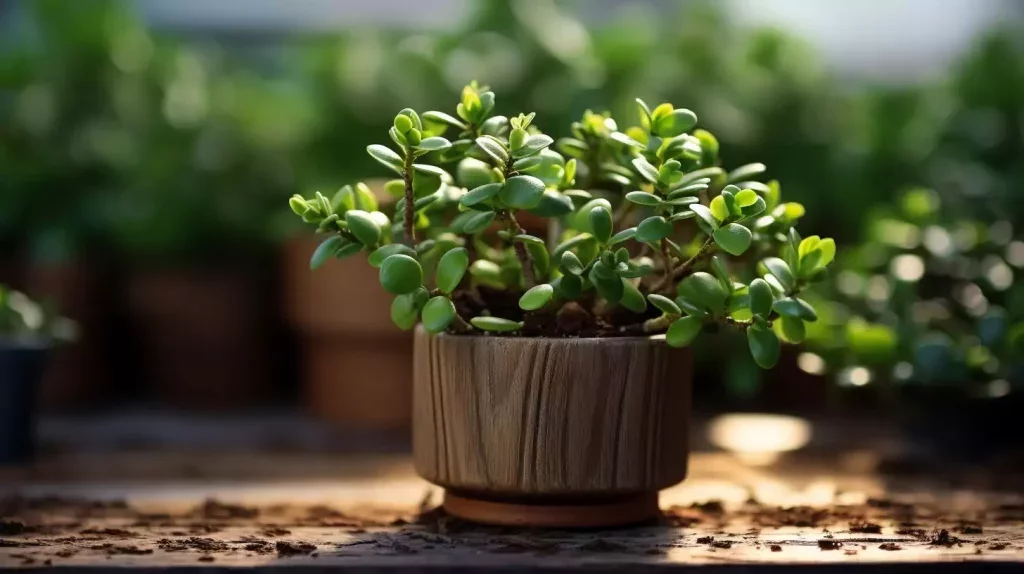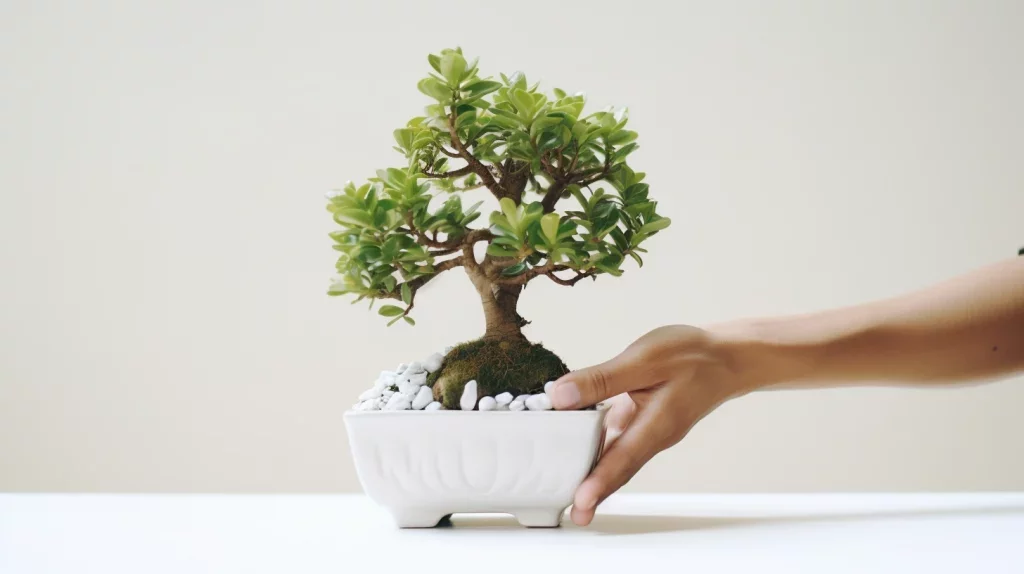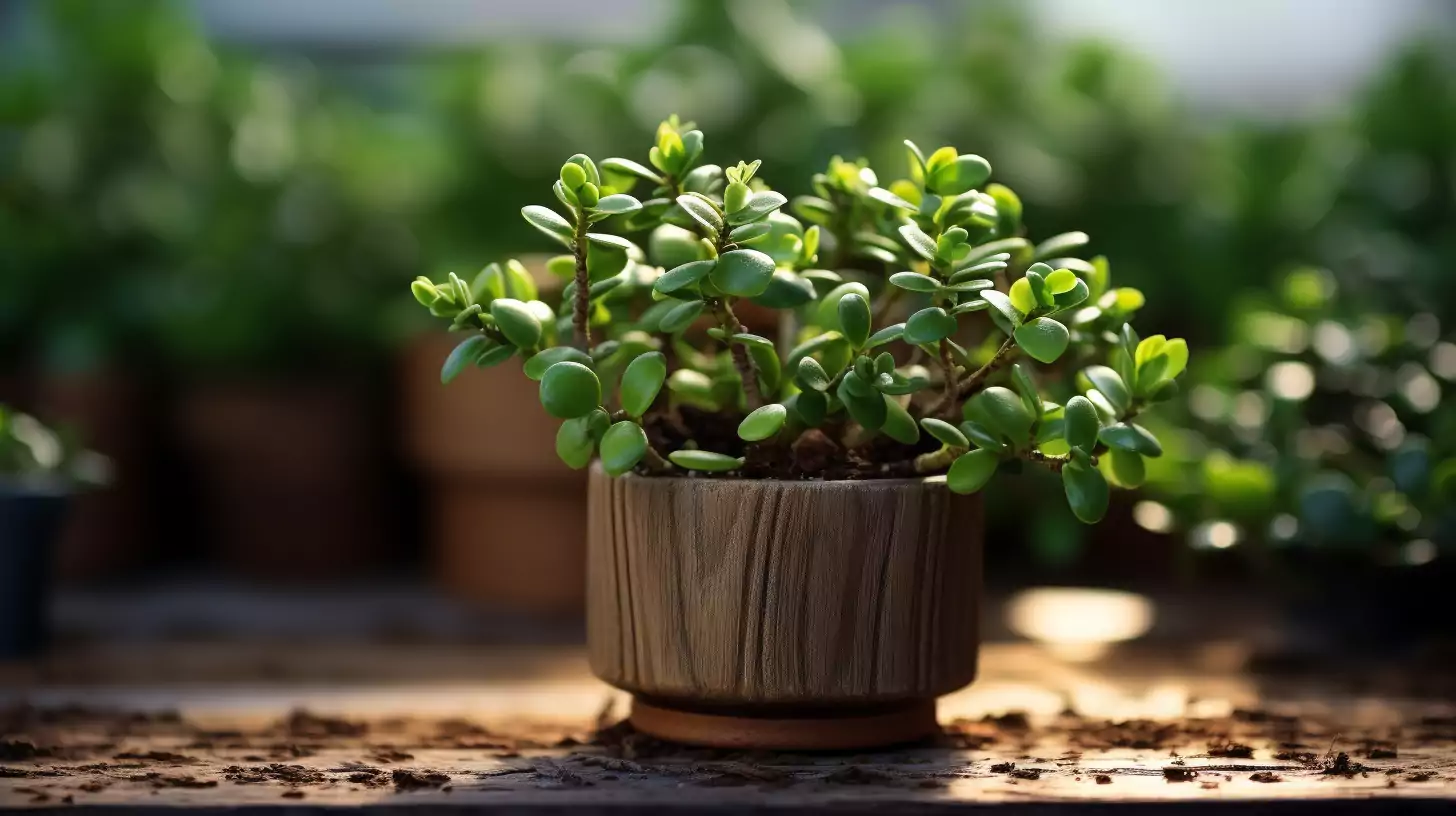Jade plants, with their thick, lush leaves and robust growth, are a popular choice among succulent enthusiasts. One of the most rewarding aspects of cultivating these plants is propagation, a process that allows you to create new plants from your existing jade. In this detailed guide, we’ll explore the art of propagating jade plants through various methods, including leaf cuttings, stem cuttings, and water propagation. 🌱

Propagation Methods: Multiplying Your Jade Joy
Propagation is a fantastic way to expand your collection of jade plants or share them with friends and family. The jade plant, scientifically known as Crassula ovata, is particularly suited for propagation due to its tendency to drop leaves or branches, which can then be turned into new plants.
Leaf Cuttings: The Simple Start
Starting with leaf cuttings is perhaps the most straightforward method of jade plant propagation. If a leaf falls off, don’t throw it away! This fallen gem can become a new plant. The process involves gently twisting a healthy leaf from the stem – make sure you get the entire leaf, including the base. Once you have your leaf, place it in a warm, bright spot to allow it to form a callus over a few days. This step is crucial as it reduces the risk of rotting when the leaf is planted.
After the callus forms, you can place the leaf on top of a pot filled with well-draining succulent soil. In time, roots will emerge from the callus, and a new jade plant will begin to grow. Patience is key here – it can take several weeks or even months for a new plant to form.
Stem Cuttings: A Step Up
Stem cuttings are another effective way to propagate jade plants. Select a healthy stem with two to three nodes (the points where leaves attach to the stem) near the bottom. Using a clean, sharp knife or scissors, cut the stem, and just like with leaf cuttings, let it dry and form a callus over several days.
Once the callus has formed, plant the stem cutting in a pot with well-draining succulent soil. The nodes, where roots will develop, should be buried in the soil. Keep the soil lightly moist but not soggy, and in a few weeks, the cutting should start to root firmly into the soil.
Water Propagation: The Alternative Route
While not the most recommended method for jade plants, water propagation can still be an interesting experiment. This method follows a similar initial process as stem propagation. After allowing the stem cutting to callus, instead of planting it in soil, you place it in a container of water. Make sure only the bottom of the stem is submerged, and change the water regularly to prevent bacterial growth.
Transitioning a water-rooted jade plant to soil can be challenging, as the roots developed in water are more fragile. Carefully planting the rooted cutting in soil and gradually adjusting it to the new medium is essential for success.

When to Wave the Propagation Wand
Timing can be crucial in the propagation process. While you can technically propagate jade plants at any time, spring and summer are ideal. During these warmer, brighter months, jade plants are in their active growing phase, which can lead to quicker and more successful rooting.
Preparation for Propagation: Laying the Groundwork
No matter which method you choose, the preparation phase is vital. Allowing the leaf or stem cutting to dry and form a callus in a warm, bright place sets the stage for successful propagation. This drying period typically takes a few days and is the plant’s natural way of healing the cut and preventing rot.
Common Challenges and Tips
- Patience is Paramount: Jade plant propagation isn’t a fast process. It requires patience, as roots and new growth can take time to appear.
- Avoid Overwatering: Overwatering is the bane of succulent propagation. Keep the soil moist but never soggy to prevent rot.
- Bright Indirect Light: Provide your cuttings with plenty of bright, indirect light, but avoid direct sunlight, which can scorch them.
- Consistent Warmth: Jade plants prefer a warm environment, so avoid placing your cuttings in a spot that gets too cool, especially at night.
| Method | Description | Key Steps |
|---|---|---|
| Leaf Cuttings | Using a fallen or gently removed leaf from the jade plant. |
|
| Stem Cuttings | Cutting a part of the stem for propagation. |
|
| Water Propagation | Rooting the cutting in water before planting in soil. |
|
Nurturing Your New Jade Plants
Once your cuttings have rooted and new growth appears, treat them like mature jade plants. Gradually expose them to more light, and start a regular watering routine, allowing the soil to dry out between waterings. With the right care, these propagated plants will grow into robust, beautiful jade plants, adding green splendor to your home or garden.
Jade Propagation: A Green Thumb’s Delight
Propagating jade plants is a delightful and rewarding aspect of succulent gardening. Whether you choose leaf cuttings, stem cuttings, or water propagation, the process allows you to multiply the beauty of these resilient and attractive plants. It’s a journey of patience and care, but the reward of growing new life from a single leaf or stem is truly unparalleled. So why not start your propagation adventure today and watch as your jade garden flourishes and grows. 🌿💚

FAQ🌱
1. How Do I Prune a Jade Plant for Propagation?
To prune a jade plant for propagation, use clean, sharp scissors or pruning shears. Identify healthy branches or leaves that are not too old and make a clean cut. Remember, the parts you remove can be used as jade cuttings for propagation. Pruning not only helps in propagating new plants but also encourages healthier growth in the parent plant. 🌿✂️
2. What Should I Do with Jade Cuttings After Pruning?
After pruning your jade plant and obtaining jade cuttings, allow them to dry for a few days to form a callus on the cut end. This step is crucial as it helps prevent rot when you plant them. Once a callus has formed, you can proceed with rooting them in soil or water. 🍃
3. How Do I Trim a Jade Plant Without Harming It?
Trimming a jade plant is similar to pruning. Use clean, sharp tools and make precise cuts. Avoid removing too much of the plant at once; usually, trimming about a third of the plant is safe. Focus on removing any leggy branches, dead leaves, or overcrowded sections to maintain the plant’s health and appearance. 🌼👩🌾
4. Can You Explain How to Root a Jade Plant?
Rooting a jade plant is simple. After taking your cuttings and allowing them to callus, plant them in a well-draining succulent soil mix. Water sparingly, just enough to moisten the soil, and place the pot in bright, indirect light. Rooting usually occurs within a few weeks, but it can sometimes take longer. Patience is key! 💧🌞
5. Is It Better to Propagate Jade Plants in Water or Soil?
Both methods can be successful, but soil propagation is generally more straightforward and has a higher success rate for jade plants. Water propagation can be more challenging, especially when transitioning the new roots from water to soil. However, it can be a fun experiment if you’re up for the challenge! 💦🪴
6. How Long Does It Take for Jade Plant Cuttings to Root?
The time it takes for jade plant cuttings to root can vary, but generally, you should see roots forming within 2-4 weeks. Ensure the cuttings are placed in a warm, bright location and the soil is kept slightly moist. Patience is crucial, as some cuttings may take longer to root. 🕒🌱
7. What Are Common Problems When Propagating Jade Plants?
One common issue is rotting, which often occurs if the cuttings are not properly callused or if they are overwatered. Another problem is a lack of rooting, which can happen if the cuttings don’t have enough warmth or light. Ensure you follow the steps carefully to minimize these risks. 🚫🌿
8. Can I Propagate a Jade Plant from a Single Leaf?
Yes, jade plants can be propagated from a single leaf. Gently twist off a healthy leaf, let it callus over a few days, then place it on top of the soil. With time, roots and a new plant will emerge from the base of the leaf. This method requires patience but is quite rewarding. 🍃🆕
9. How Do I Care for My Newly Propagated Jade Plants?
Once your jade cuttings have rooted and started growing, treat them like mature jade plants. Provide them with bright, indirect light, water when the soil has dried out, and use a succulent-specific fertilizer during their growing season. Gradually acclimate them to their new environment for best results. 🌞💦
10. Is Propagating a Jade Plant Easy for Beginners?
Yes, propagating a jade plant is considered one of the easier plant propagation projects, making it great for beginners. The process is straightforward, and as long as you provide the right conditions, you’ll likely have success. Give it a try and watch your jade plant family grow! 👍🌱
Remember, propagating jade plants can be a fun and rewarding process. With patience and care, you can easily multiply your collection and enjoy the beauty of these succulent plants for years to come! 🎉🌿

